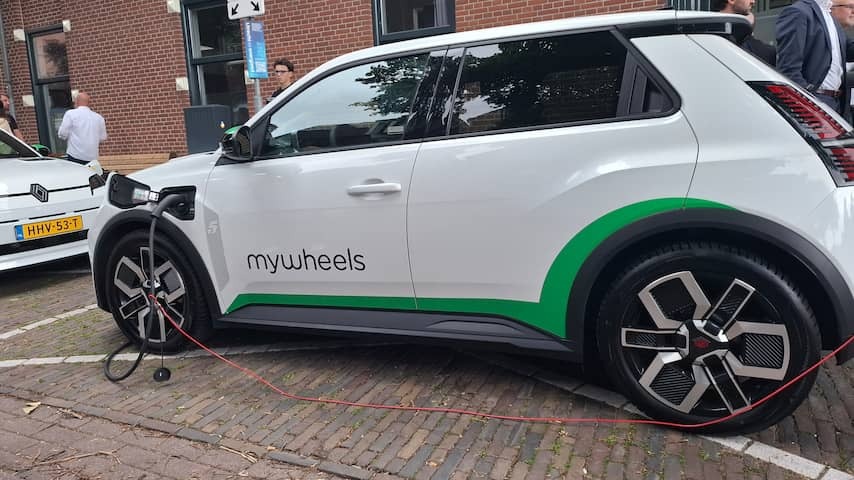
In Utrecht, since this week, the first plug-in cars are driving that help to counter the overloading of the power grid. The electric vehicles cannot only charge at favorable moments, but also return power from their batteries to the grid.
Charging station company WeDriveSolar has been experimenting with the technology for ten years. Now the teething problems are over and, according to the company, it is time for large-scale deployment. The starting shot was given on Wednesday, together with the municipality, car manufacturer Renault and car sharing company MyWheels.
There are now fifty shared cars driving in Utrecht that use the so-called vehicle-to-grid technology (V2G). These are parked at charging stations that are specially made for this. In a year and a half, the number of smart plug-in cars in Utrecht should have grown to five hundred.
MyWheels emphasizes that the shared cars will never completely drain their batteries. So it remains possible to spontaneously step into a shared car. If a car is reserved, the system ensures that the battery is full upon departure.
Virtual power plant
In the average sixteen hours a day that the shared car is not used, it is part of a ‘virtual power plant’. It will charge when electricity prices are low – usually when the sun is shining brightly – and discharge when electricity is expensive. The grid operator can also use the batteries for a fee to prevent overloading the grid.
With the new technology, MyWheels’ shared cars are not only a means of transport, but “driving neighborhood batteries”, says director Laurens van de Vijver. “I am very proud that this is happening here in our backyard.”
Experts have long seen smart plug-in cars as a way to combat the pressing problems on the power grid and to use more green energy effectively. In the coming years, there will be more and more home batteries and large-scale battery parks that store excess solar power and can step in when there is a high demand for electricity during peak hours. Plug-in cars could also do that, but usually do not yet have the ability to load ‘bidirectionally’.
Renault is now adding this option as standard to its electric cars. Next year, the automaker also wants to make it possible for Dutch consumers to use a plug-in car as a home battery. A special charging station will have to be purchased for this.
Amsterdam and Rotterdam follow
MyWheels sees the Utrecht charging project as a prelude to a much larger deployment of the technology. Later this year, Amsterdam, Rotterdam and Eindhoven will be next, says Van de Vijver.
According to him, many municipalities are enthusiastic because they often face the limits of the power grid. In Utrecht, new housing estates are threatening to no longer be able to get a connection, or they have to make do with a limited capacity. For example in the new Beurskwartier district.
“You can solve that with a large battery that you can order from Tesla. It costs a few million,” says Matthijs Kok from the municipality of Utrecht. “But there will also be 150 shared cars, because it is a car-free neighborhood without private car ownership. If you use them all as a battery buffer, you don’t need that stationary battery. You use less material, because you already have those cars anyway. It is a win-win on all sides, but we have to arrange it with each other.”
Six coal-fired power stations on the road
In the future, smart cars throughout the country can make a major contribution to the power supply during peak hours, thinks Baerte de Brey from ElaadNL, a knowledge center of the Dutch grid operators. The million plug-in cars that are now driving around are equal to a capacity of 10 gigawatts: six large coal-fired power stations.
“That is not yet available for vehicle-to-grid. But if many Renaults are sold in a few years, and Kia, Hyundai, Polestar and Tesla also supply it as standard, then you will potentially get huge volumes.”